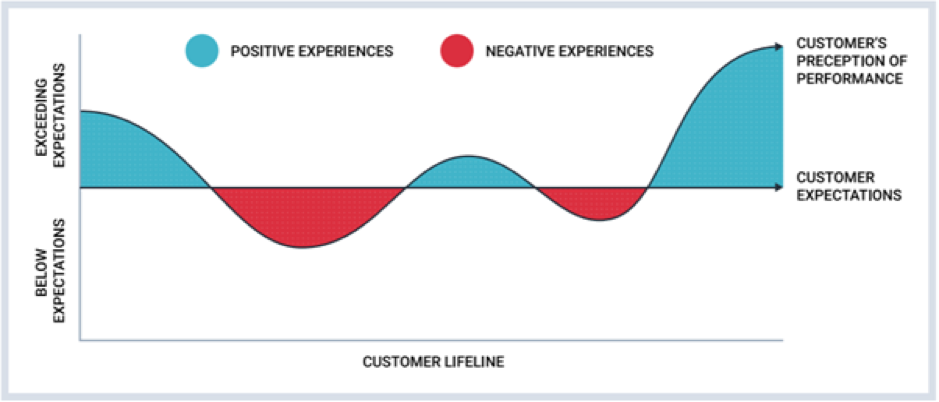Marketing teams across the world spend hundreds of billions of dollars to set high expectations in order to attract new customers. Buy our product, says marketing, and you’ll look just like a supermodel. Use our product, they claim, and you’ll become the next Amazon. In a world where a competitor is only a Google search away, it can feel like we need to promise the moon and the stars to close the deal.
This has created a situation where customer expectations are higher than ever. But the methods we’re using to manage the customer experience are stuck in the past. We’re still surveying customers the same way we were in the 90s, still battling siloed data and processes, and still relying on guesswork or bureaucratic reports to choose potential initiatives.
This leaves companies falling behind what customers actually want in terms of their customer experience. In Bain & Company’s recent survey of the customers of 362 companies, only 8% described the experience they received as “superior”.
The Three Pillars of Customer Experience
Moving customer experience into the future requires a whole new outlook on how we manage CX. While there are many approaches to managing CX, at CloudCherry we believe that modern organizations must use the three pillars of customer experience to provide best in class experiences:
Pillar #1: Customer experience must be measured by the customer journey
Pillar #2: Companies must gain a 360 degree view of the customer
Pillar #3: Customer experience analytics must be predictive
Let’s dive deeper into each of the three pillars to see how companies can deliver a modern customer experience that lives up to the expectations of their connected customers.
The Customer Journey
There is no magical moment that defines the whole experience with a brand. Instead, brands must look at customer experience as a sum of interactions and understand that customers’ loyalty is a direct result of all these interactions combined. Because of this, customer experience needs to be measured across the entire customer journey - not just at the moment a survey is delivered.

The first pillar of customer experience is using a customer journey map to understand the current customer experience your brand provides and to set the stage for identifying areas for improvement. The customer experience must be measured through a continuous collection of moments across the entire customer journey.
A 360 Degree View of the Customer
The second pillar of customer experience management is to develop a 360 degree view of the customer to enable actionable insights, proactive support and advanced marketing automation.
Almost every team in a company has a separate set of data being monitored. Rarely, if ever, does this dataset get shared across departments. Even if each department was aware of the data available to them, the data is frequently unsorted or siloed in several different systems.
Companies need to unlock the power contained in all this existing data to deliver on customer expectations proactively. A modern customer experience platform with open APIs and integrations can help bring all the data together.
Predictive Analytics
Building an accurate customer journey map and continually measuring the customer experience is not enough — in a fast-paced world, it’s equally as important to act on opportunities and potential issues as soon as possible. The best way to do so is to proactively analyze the key drivers of the customer experience with predictive analytics.
With limited time and resources to dedicate to improving the customer experience, organizations often have to make difficult decisions about what to prioritize. While listening to the customer is a good place to start, the things they are most vocal about might not be the best for your business. They might say they really want more color options, but will be providing more customization increase sales? How do you decide which Voice of the Customer initiative gets the green light and which never sees the light of day?
Predictive analytics ties customer experience initiatives to business outcomes and financial metrics to help answer those “what if” questions. A platform like CloudCherry can identify the true drivers of the customer experience and highlight opportunities for where businesses can get the most bang for their buck on customer experience investments.
Driving Business Outcomes through CX
Together, the three pillars of customer experience create a strategy for your business to consistently exceed customer expectations and meet your own goals. By managing the experience across the journey, using business intelligence data for customer context and leaning on predictive analytics for insight, businesses can make CX their competitive advantage.

